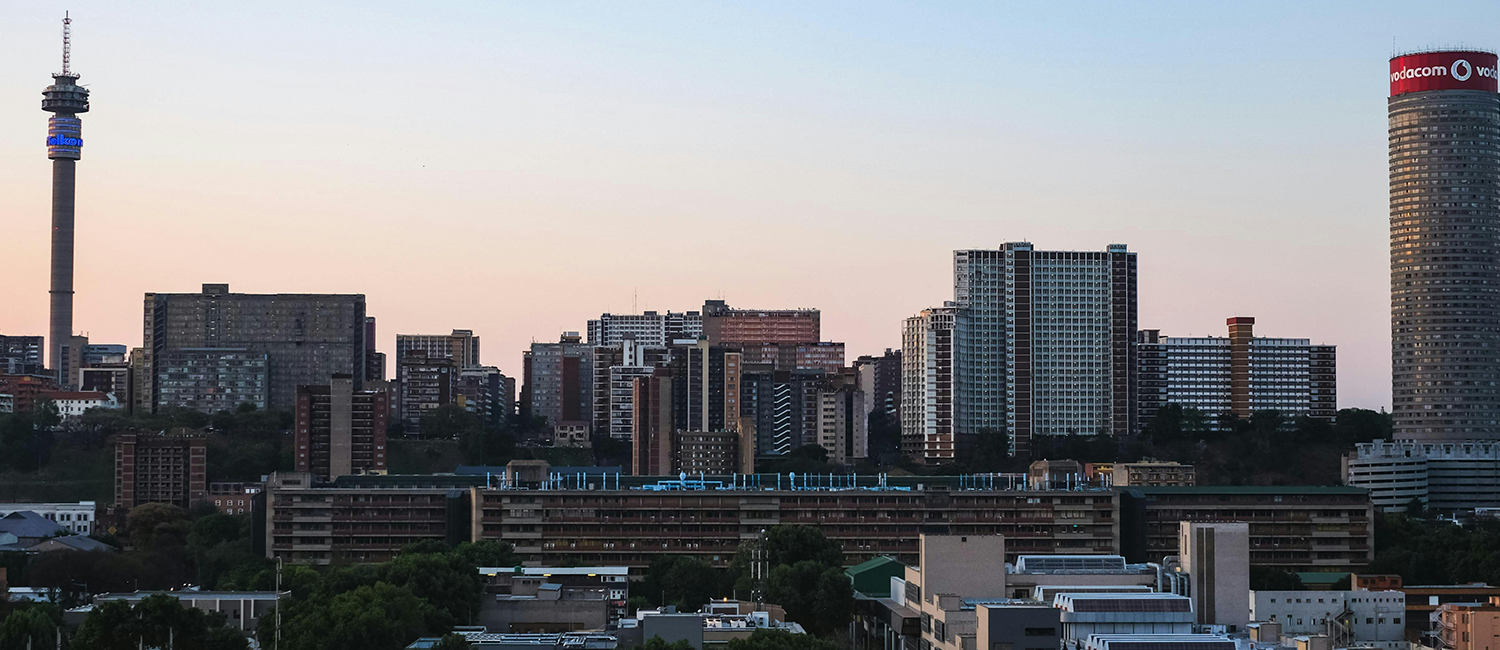In the last 20 years, the country’s first democratically elected government has made inroads into upgrading housing, transport, health care and energy infrastructure. It has also made provision for growing South Africa’s economy sustainably through responsible use of natural resources.
Over the past 20 years, the democratic government has worked hard to build sustainable and accessible infrastructure to support the needs of the majority of people in country – among those previously unmet needs are housing, transport and energy.
In 1994, when the country moved from apartheid to a democratic state, it inherited an infrastructure backlog and few environmental protection policies. Its National Development Plan (NDP), along with a commitment to planning and building infrastructure resilient to the risks of climate change, are overturning decades of neglect. The NDP envisages a “transition to an environmentally sustainable, climate-change resilient, low-carbon economy and just society”.
In the first few years of democracy, up until the early 2000s, the government focused on increasing access to social and household infrastructure through providing housing, schooling and health care, and connecting houses to electricity grids and water networks. As the economy grew, bringing with it increased prosperity and greater use of infrastructure by many more people than it was designed for, resulted in new demands for road, rail, port, water, electricity and telecommunications infrastructure.
There was a need for greater investment in economic infrastructure, while the nation had still had to address apartheid-era backlogs in housing and other social requirements. In the past 20 years, the government has made inroads into meeting these various urgent needs.
SOCIAL INFRASTRUCTURE DELIVERY 1994 TO 2004
By 2004, an estimated 1.6 million subsidised houses had been built. Some 56 000 new classrooms and 38 000 school toilets had been built, with 2 700 more schools receiving potable water, and about 4 000 more schools connected to electricity. Health services had reached new areas, with the construction of more than 700 new clinics, upgrading an additional 212 clinics, buying 215 mobile clinics, and re-equipping 2 298 clinics. Three new tertiary hospitals with more than 2 000 beds had been constructed under the Hospital Rehabilitation and Reconstruction Programme, and R1.6-billion had been spent on 492 projects to improve 141 hospitals.
The government had provided a basic water supply to more than 9 million additional people, access to basic sanitation to 6.4 million more people, and about four million more electricity connections had been made to poor households.
SOCIAL INFRASTRUCTURE HIGHLIGHTS OVER THE PAST 20 YEARS
In basic education facilities, 84 468 new classrooms and 21 774 ablution facilities have been built. Some 8 765 schools have been linked to water distribution networks; 6 434 schools have been connected to the electricity grid, and some 2 761 new schools have been constructed.
More than 1 500 health care facilities have been built and existing ones have been revitalised to ensure that everyone can access health care within a 5km radius of their home. In total, 18 new hospitals have been built and more than half of the 400 public hospitals in South Africa have been renovated. Some 3.7 million subsidised housing opportunities, including houses and serviced sites, have been provided to the very poor, giving a home to about 12.5 million people.
Access to a basic level of sanitation has increased from just over 50 percent of households in 1994/95 to 83 percent in 2011/12. Access to a basic level of clean water has increased from just over 60 percent of households in 1994/95 to over 95 percent in 2011/12. Access to electricity has increased from just over 50 percent of households in 1994/95 to 86 percent in 2013/14.
STREAMLINING DELIVERY
Based on the lessons learned in delivering infrastructure in the early years of democracy, important steps were taken to improve planning and delivery. In its National Infrastructure Plan, the government will focus on:
- Improving regulation, funding and investment, including enhancing the capacity and effectiveness of regulators and addressing existing gaps in the water and rail sectors;
- Ensuring reliable generation, transmission and distribution of energy (electricity, liquid fuels, coal and gas);
- Ensuring the maintenance, strategic expansion, operational efficiency, capacity and competitiveness of South Africa’s logistics and transport infrastructure (ports, logistics hubs, road, rail and public transport infrastructure and systems); and,
- Ensuring maintenance and supply availability of the country’s bulk water resources infrastructure (dams and interbasin transfers, bulk water and wastewater).
The Public Finance Management Act was passed in 1999 and three-year, rolling medium-term budgeting was introduced, enabling multi-year project planning and expenditure.
ELECTRICITY DELIVERY
The democratic government has provided access to electricity to more than 5.8 million poor households. The electrification programme –rolled out by Eskom and municipalities and administered by the Department of Energy – has reduced the percentage of households without electricity to 14 percent, from approximately 50 percent in 1994. The programme is ongoing.
TRANSPORT
Before 1994, transport was not managed holistically. Racially segregated town planning, in which black people were allocated land far away from business centres, coupled with poor transport infrastructure, meant that most South Africans did not have easy access to economic opportunities or social spaces and services. Since the pass laws have been abolished, new settlements have been built closer to cities, and freedom of movement prevails.
Modes of public transport such as buses and rapid rail routes gained impetus after 2005, when the government introduced its Public Transport Infrastructure and Systems Grant. The aim of the grant was to improve public transport infrastructure, initially focusing on projects linked to the FIFA World Cup, held in South Africa in 2010. The government also allocated substantial funding to set up bus rapid transit systems in several metros. The Gautrain project also got under way during this period.
In 1999, the government introduced the Taxi Recapitalisation Programme to give an incentive to the private minibus taxi industry to renew its fleets with newer and safer vehicles, in the interests of commuter safety. A R55 000 scrapping allowance per vehicle was allocated, provided that a new vehicle adhering to a list of safety specifications was purchased. While the programme is being evaluated as a fixed-period incentive, it has resulted in the scrapping of more than 57 000 taxis in poor condition over the past eight years in favour of vehicles with higher safety specifications, thus contributing to the drive for commuter safety.
SUSTAINABILITY
The apartheid government largely ignored issues of sustainability during its time in power, building the country’s economy around energy- and resource-intensive sectors, such as mining and agriculture. As did many other countries in the last century, it did little to regulate issues such as pollution, enforce land rehabilitation or manage limited resources like water and its coal-based energy solutions.
DEVELOPMENTS SINCE 1994
The NDP indicates that: “Shifting to a green economy, including to a low-carbon economy, is shifting to a more sustainable economic growth and development path in the long term.”
The country’s first development policy, the Reconstruction and Development Programme (RDP), advocated for sustainable and environmentally friendly growth. It was followed by the passing of the National Water Act in 1996, the National Environmental Management Act (NEMA) in 1998 and other legislation that provide a legal framework based on co-operative governance to promote the right to a clean and healthy environment.
A regulatory framework for environmental impact assessment was introduced in 1997, and enhanced in 2006. And a National Framework for Sustainable Development was adopted in 2008, followed by the adoption of the National Strategy for Sustainable Development (NSSD) in 2011. It states that, if the country’s long-term economic performance is to avoid breaching key ecological thresholds, it should develop new technologies and processes to increase productivity, while using less energy, fewer resources and reducing waste. The framework also asserts that efforts to eradicate poverty could be undermined if scarce resources continue to be used unsustainably.
The NSSD and, more recently, the New Growth Path and the NDP, have emphasised the green economy as a key area of growth. Over the past few years, the environmental sector has made significant and direct contributions to job creation and poverty alleviation though programmes such as Working for Water, Working on Fire, Working for Wetlands, People and Parks, and the Green Fund.
CLIMATE CHANGE MITIGATION AND ADAPTATION
South Africa, like many other developing countries, is at particular risk from climate change as a result of a combination of geography, the intrinsic vulnerability of poor communities to environmental threats, and the pressures that economies based on resource extraction place on the environment. The country has acknowledged that climate change poses a major threat and has made a commitment to strengthening its social and economic resilience to the effects of such change.
In 2008, the Cabinet approved the Long-term Mitigation Scenarios to guide policy direction. The following year, the president said the country would implement mitigation actions that would collectively result in a 34 percent and a 42 percent reduction in its emissions growth trajectory by 2020 and 2025, respectively.
While preparatory work and research to set targets and measure reductions in emissions in different sectors are under way, implementation programmes include more than 300 000 domestic solar water heaters installed to date and the launch of the Renewable Energy Programme.
The general deterioration in the quality of the environment poses risks to economic growth, poverty eradication and reducing inequality, but the democratic government has created the policy framework needed for sustainable development.
Sources: Departments of Basic Education, Health, Human, Settlements, Water Affairs and Energy, and Statistics South Africa, as well as National Treasury: Budget Review 2004

